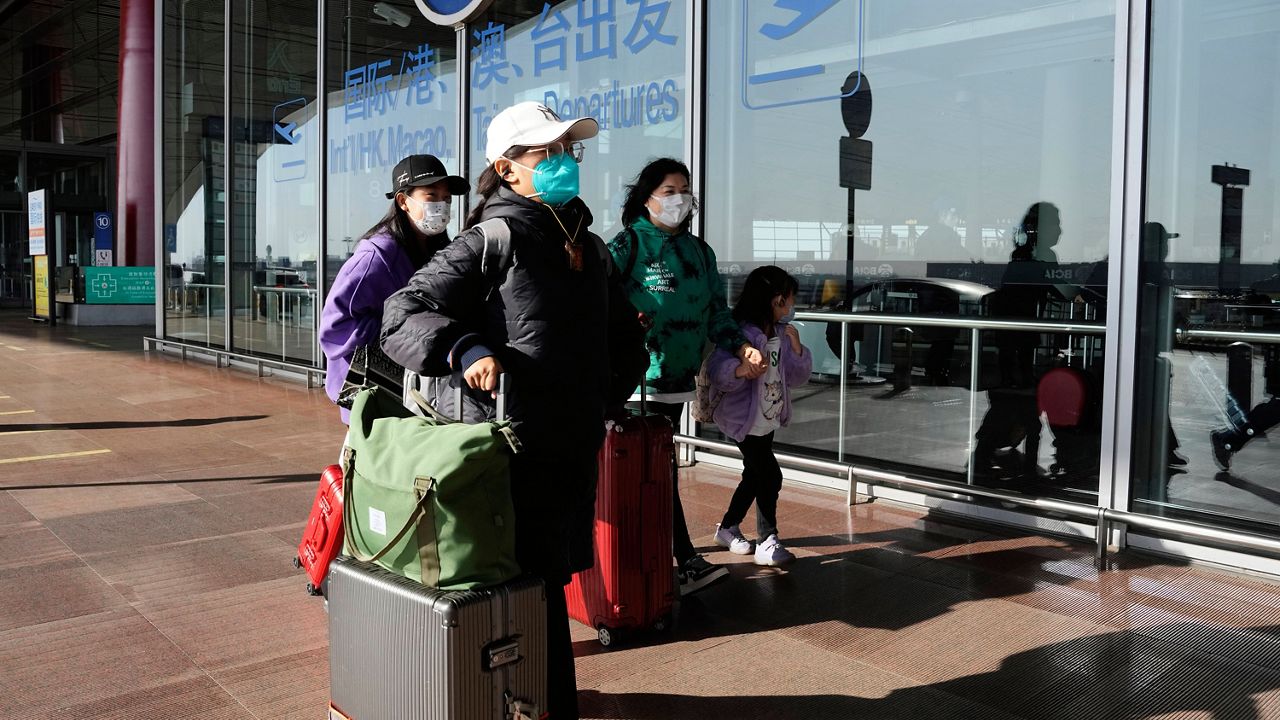The United States will begin requiring negative COVID-19 tests or a document of recovery for travelers flying from China amid a surge in cases in the country, officials announced Wednesday.
The new rule from the Centers for Disease Control and Prevention, which also extends to Macau and Hong Kong, begins Jan. 5, 2023.
All travelers from China 2 years and older will be required to take a COVID-19 test no more than two days before departure and provide proof of a negative test before boarding their flight, or provide documentation of recovery if they tested positive more than 10 days before the flight.
"CDC is announcing this step to slow the spread of COVID-19 in the United States during the surge in COVID-19 cases in the [People’s Republic of China] given the lack of adequate and transparent epidemiological and viral genomic sequence data being reported from the PRC," the CDC said in a release.
"Variants of the SARS-CoV-2 virus continue to emerge in countries around the world. However, reduced testing and case reporting in the PRC and minimal sharing of viral genomic sequence data could delay the identification of new variants of concern if they arise," the statement continues. "Pre-departure testing and the requirement to show a negative test result has been shown to decrease the number of infected passengers boarding airplanes, and it will help to slow the spread of the virus as we work to identify and understand any potential new variants that may emerge."
The restriction applies to direct flights from China, as well as passengers traveling to the U.S. from Incheon International Airport in South Korea, and Toronto Pearson International Airport and Vancouver International Airport in Canada – three travel hubs which cover the majority of travel from China – if they have been in China in the last 10 days before flying.
The rule also applies to travelers who are traveling from China via third country transit, or passengers connecting through the U.S. to other destinations, the CDC said.
The move by the U.S. follows similar restrictions from other countries. Japan will require a negative COVID-19 test upon arrival for travelers from China, and Malaysia announced new tracking and surveillance measures. India, South Korea and Taiwan are requiring virus tests for visitors from China.
The increase in cases across China follows the rollback of the nation's strict anti-virus controls. China's “zero COVID” policies had kept China’s infection rate low but fueled public frustration and crushed economic growth.
Lunar New Year, which begins Jan. 22, is usually China's busiest travel season, and China announced Tuesday it will resume issuing passports for tourism for the first time since the start of the pandemic in 2020.
The U.S. action is a return to requirements for some international travelers. The Biden administration lifted the last of such mandates in June. At that time, the CDC continued to recommend that people boarding flights to the U.S. get tested close to departure time and not travel if they are sick.
Early in the pandemic, the U.S. barred entry to foreigners traveling from China, weeks after the virus first emerged there three years ago. Americans were allowed to return home and flights from China were funneled to selected airports where passengers were screened for illness.
But the virus already was spreading in the U.S. among people with no travel history.



